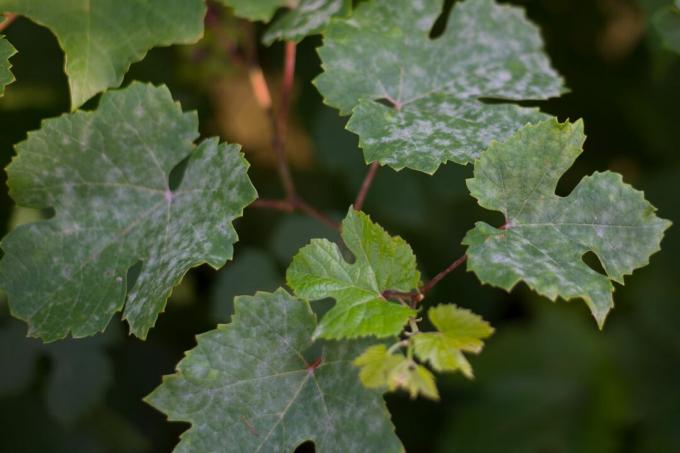Eliminate powdery mildew and downy mildew in wine: You can find out here whether home remedies also help here and which biological pesticides can be used.

More and more grapes are also being grown in private gardens. Regardless of whether the grapes are later processed into juice, feather whites or wine, a powdery mildew infestation can endanger the entire harvest. First of all, it is of secondary importance whether it is downy mildew or powdery mildew. Both pathogens can cause significant damage. With a few tips, however, you can regain control of powdery mildew or even make fighting it completely superfluous through prevention.

Recognize downy mildew and powdery mildew
You can recognize powdery mildew by the characteristic gray-white mushroom lawn, both on young shoots and on the leaves. Infested grapes stop growing and dry out, whereas larger berries burst open and can be attacked by other pathogens. In contrast, downy mildew forms round yellowish spots, which at the same time have an oily appearance. The fungal lawn is here exclusively on the underside of the leaf. The grapes are not spared either and dry out if infested (leather berries). Since grapevines are perennial, both types of powdery mildew can overwinter on the plants. An untreated powdery mildew disease is therefore very likely to break out again next year.
Prevent powdery mildew on grapevines
To prevent powdery mildew from gaining a foothold in the first place, the following tips should be followed: Vine plants should always be raised airy. Dense shoots and dense foliage significantly increase the likelihood of a disease outbreak. When it comes to wine, however, the choice of type is particularly important. Powdery mildew and downy mildew are introduced diseases, which is why native European grape varieties have hardly any resistance to the fungus. The varieties: Portugieser, Elbling, Kerner, Trollinger, Silvaner, Muskateller are very susceptible to powdery mildew. The following varieties of downy mildew are: Müller-Thurgau, Gutedel, Portugieser, Limberger. Incidentally, the berries are no longer edible even with slight mildew infestation, as the grapes develop a very unpleasant taste.
Protect vines with baking powder and milk?
Powdery mildew, regardless of whether it is wrong or real, often stubbornly sticks to the grapevine. The fungus begins to grow again in early spring and can attack the newly formed shoots. Unfortunately, household remedies such as baking powder or milk usually do not help. But it is entirely possible to fight powdery mildew with biological sprays. The biological agent has to be sprayed several times on the affected plants, otherwise the powdery mildew is only inadequately controlled. In order for the spraying measure to be successful, you should also read the manufacturer's product instructions carefully. Resistant varieties offer the advantage that often only one or two sprayings are necessary.
Are you looking for more information on powdery mildew and downy mildew? Then visit our special article, where you can find everything about the topic mildew Experienced.
